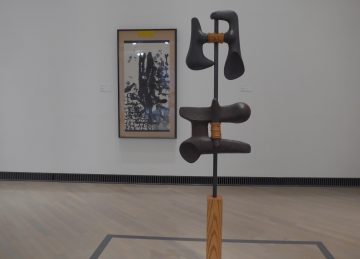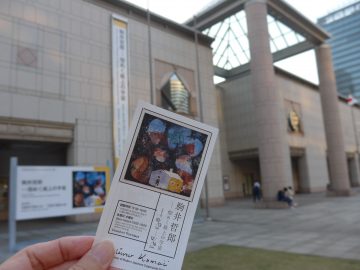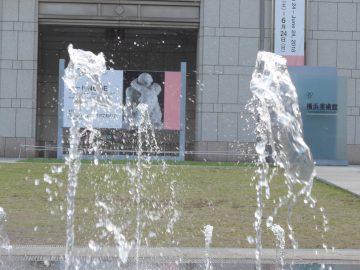People Landscape in KANAGAWA | Hayama Art Festival - Landscapes that connect people
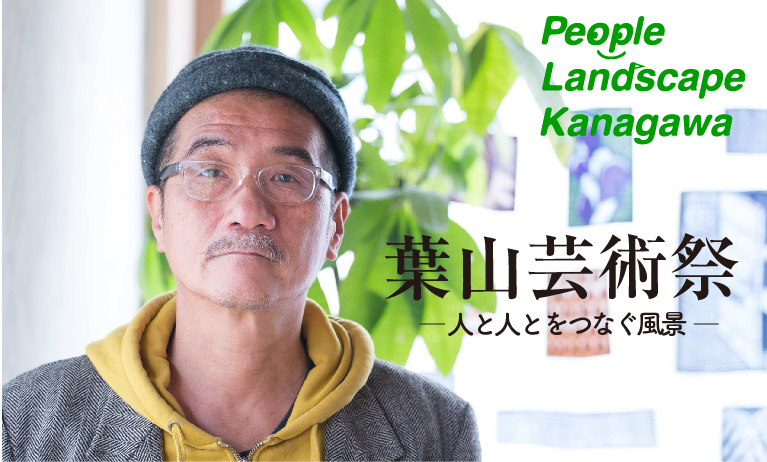
Interview & Text: Akiko Inoue Photo: Masamasa Nishino
The Hayama Art Festival, which was first held in 1993, when art festivals were not as prevalent in Japan as they are today, can be said to be a pioneer of art festivals in Japan. The terrain is surrounded by sea and mountains, and the people who live there create a peaceful atmosphere. The art festival, where people go from shop to shop and from house to house, exchanging greetings like "Hello! We're here," while looking at the sparkling sea from the bus window, is a place to meet people and interact with nature. We asked Masakazu Asayama, one of the organizers who has been involved in the festival for a long time, how the Hayama Art Festival began and has continued to this day. The location of the interview was Restaurant & Gallery Karabashi, which is right in front of the bus stop at Morito Shrine.
■ The beginning of the Hayama Art Festival
- First of all, how did the Hayama Art Festival start?
Masakazu Asayama (hereinafter Asayama): Even back then, there were many people involved in art and culture in the town of Hayama, but if you wanted to see their work or go to a concert, you had to go to Tokyo or Yokohama. I think it all started with the simple desire to somehow "see it in my hometown."
- Mr. Asayama, you have been involved since the second event, but who was the initiator?
Asayama: At that time, there was a cultural promotion group called Ichiyokai, and they were the core of the event, and it started with a subsidy from the town. Ichiyokai was made up of many people in their 60s, including school teachers and architects. They started a relatively academic art event, which is what got us started.
- The first one was in 1993, so I imagine it was a time when art festivals weren't as common as they are now, but were there any other projects that you used as inspiration?
Asayama: Nothing in particular. I think it's completely original.
I think it was the people of Yufuin who first started this kind of art festival. The Izu Kogen Art Festival was held the same year as the Hayama Art Festival, and it continues to this day. In the late 1990s, the Echigo-Tsumari Art Triennale began. Unlike Echigo-Tsumari, Hayama is not run by the government, but by local people to promote local culture, so I think there is a big difference between the two.

■ The beginning of "Open House"
*Open house = a style of exhibition or presentation in which a person opens their home to the public
- So you started everything yourself, from fundraising to everything else. That must have been very difficult. Did you also start the "Open House" that is synonymous with the Hayama Art Festival from the very first festival?
Asayama: I think this was the fourth time we've held an open house.
- What was the trigger?
Asayama: It's kind of a trend, and we don't actually have any control over it.
There was a married couple of artists named Haruna and Davide, and they decided to start exhibiting at home since there was nowhere to do so. They found it interesting and it spread, and since then this style has been established at the art festival.
- I thought for sure that the idea would have come from the management side. But it seems that because of this bottom-up, flat relationship with no top or bottom, various possibilities have opened up.

■ What the Hayama Art Festival values : What becomes clear through years of observation
- Please tell us the concept and goals of the Hayama Art Festival.
Asayama: Originally, it started with the idea of local production and consumption of arts and culture, so that local people could enjoy local arts and culture, so of course that is the basis. And the strongest concept is that "local production and consumption of arts and culture can be used as a tool to communicate with each other." Initially, the concept was expressed in four English words: Nature / Education / Art concious / communication. As you can see from that, the natural environment of the region is also an important keyword.
- This year marks the 22nd year. Have you noticed any changes as you've continued?
Asayama: Recently, there is a keyword that we've been hearing a lot from people outside, and that we think is a defining feature of our town. It's "regional ties." However, I think this isn't just true for Hayama, but for the whole of Japan.
- Even when I look at the website, it is very clear that this is an art festival created by the participants. There is a connection and trust between people, and I feel that this teamwork is the result of having been cultivated for more than 20 years. What motivates you, Mr. Asayama, to continue the Hayama Art Festival?
Asayama: Moriyama Shrine is often where everyone gathers during the Hayama Art Festival, and by continuing the festival, we are able to strongly support the Moriyama Shrine community, and we are involved in maintaining the environment of Moriyama Shrine. Also, the people who gather here are based on the connections made through the festival, and I think these are our assets. For example, our help has prevented overdevelopment of this land, and people have started to gather at this cafe, which is our regular base. I am most proud of the fact that the community is thriving through the Hayama Art Festival. Also, the participants have all kinds of lives, and being able to accompany them is one of the joys of the festival.
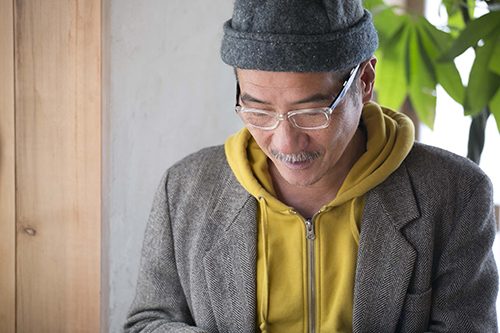
- So there's meaning in continuing to do it.
Asayama: That's right. By continuing to do it, you can deepen your relationships with various people and organizations, and as a result, various changes can occur for both of you. It's not a sudden change, but a gradual change.
And by continuing to look at it for many years, we can see new trends happening in the area. For example, not only in Hayama but also in Kamakura and Oiso, there are many villas and private homes that are famous architectural works, but recently there has been a trend of them being demolished due to issues such as inheritance. We can exchange opinions on what the museum thinks about this, and what we think about it as the art festival.
- It's very important that people who meet through the art festival can build relationships that allow them to discuss other local issues.
Asayama: That's right. Of course, the art festival itself is important, but what is important to us is what is born through the art festival. At first glance, it may seem like a by-product, but I think that supporting it is actually the most important thing.
■ Hayama Art Festival 2014

- Finally, please tell us about this year's Hayama Art Festival.
Asayama: As in previous years, about 125 participating groups will be presenting their works in various forms. In addition, a music event organized by the executive committee, which is held every year at the end of April, and an "Open-Air Art Market" with about 90 participating groups on the last weekend of the art festival will both be held at Moriyama Shrine. *Official website link
- Whenever I visit the Hayama Art Festival, I always plan the best route for myself, but is there any way you would recommend getting around?
Asayama: We will be holding a guided tour in collaboration with the Museum of Modern Art on Wednesday, May 7th. In the morning, we will look at the museum's exhibits, and in the afternoon, we will be touring the open house around the museum. We will be going through the little streets of the Isshiki district that not many outsiders know about, so I think you will be able to enjoy those scenery as well.
- It sounds like a fun field trip! I'm looking forward to the opening of the Hayama Art Festival.
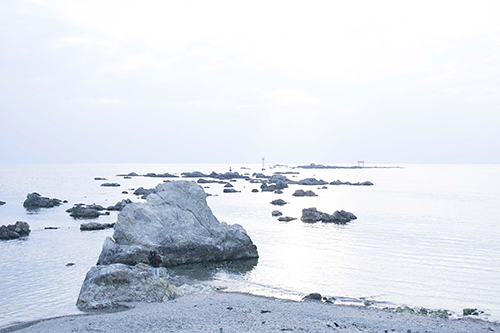
Photo: View from Morito Shrine
(Editor's note)
Through this interview, I felt that the Hayama Art Festival is one of the indispensable festivals for the people of Hayama, just like the local summer festivals and annual events. It is clear that the festival never rejects people from outside, and that it is based on a relationship of trust between the organizers and the participants, who work together without barriers. In a society where "connections" are emphasized, the quality of the glue that connects people is being questioned these days. However, I felt that this is not something that can be achieved overnight, but rather it is something that can only be achieved by not refusing to refuse to take the time to do so.
Please come to Hayama in the spring to experience the sustainable operation of the Hayama Art Festival and to encounter the people and nature that live there.
